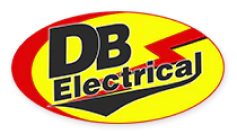
- Product Info
- Applications List
- Part Replacement List
- Policy Information
- Reviews
Quick Links
Overview
Stens OEM Replacement Belts
Our outdoor power equipment belts are made to OEM specifications for a perfect fit and flawless performance. Exact fit specifications make installation easier and deliver exceptional performance over the life of the belt. Stens OEM replacement belts are made from premium materials for a long service life.
How to choose the right type of belt for outdoor power equipment
It’s important to choose the right kind of belt to get the performance you expect. Using the wrong kind of belt will deliver sub-standard performance.
Covered Belt
A protective covering overlays the belt so that you cannot see the cords of the belt like on a raw edge. On a deck belt application, if you strike an object such as metal, rock or hardscape, it will give you slight slippage, allowing the blade to stop and reduce chances of damage to the mower.
Raw Edge Belt
There is no fabric wrap so you can see the cords in the belt. This type of belt will not slip and is used for powertrain applications to keep wheels in motion without stopping, even on wet grass or other slippery terrain. These belts are also preferred for industrial market applications and compressors.
Cogged Belt
Cogged belts have similar applications to raw edge belts. This no-slip belt is preferred for zero-turn applications. Cogged belts have more tacticity on pulley surfaces than typical raw edge belts to enhance no-slip properties.
Double V Belt
Double V Belts are available in both covered and raw edge options. Double V Belt are used for applications in which it’s necessary for the belt to handle tight turns while maintaining contact with bearing surfaces.
When it’s time to replace a belt
You should periodically inspect belts to detect fraying, wear, shiny surfaces or dry rot. If you spot any of these conditions, you’ll want to replace your belts promptly before failure occurs. You may also want to consider replacement on intervals recommended by your owner’s manual.
A great value for the money
DB Electrical has worked to source lawn mower belts that will give you the best value for your money. Our belts are economically priced while offering high durability. Quality materials mean you won’t have to replace your belts as often, saving you both time and money.
Item Number: 266-286
100% Brand New Aftermarket Part From DB Electrical
Product Specs
| Item Condition | Aftermarket Part |
Applications List
| MAKE | TYPE | MODEL | YEAR | ENGINE |
| Toro: | 74505, 74519, 74529 and 79505 model Grandstand and Grandstand Multi Force mowers with 52" decks |
Replaces These Part Numbers
Frequently Asked Questions
Q: What are some of the most popular Lawn Mower Parts needed to maintain a dependable starting mower, and get razor sharp cut results every mow?
A: Yes! A clean air filter is essential for maintaining a dependable and efficient lawn mower. It not only protects the engine from damage but also contributes to fuel efficiency, extended engine life, and overall better mower performance. It's advisable to follow the manufacturer's recommendations for air filter maintenance, including regular cleaning or replacement. Q: How often do I need to change my spark plugs? A: Inspect the mower blade annually and replace it if worn, damaged, or dull. Consider more frequent replacement for intense usage or challenging conditions. Sharpening is an option, but eventual replacement is necessary. Looking at your lawn is a great way to judge the condition of your blades. If it looks cleanly cut, then the blades are going their job. But if the grass looks scalped or choppy, it's time for a blade sharpening or replacement. Q: What is the number one cause of premature belt wear? A: The significant cause of premature belt wear in lawn mowers is excessive tension or improper adjustment. When a mower's drive belt is too tight, it can lead to increased friction, heat, and accelerated wear. Additionally, misalignment or issues with pulleys and other components can contribute to premature belt wear. Finally, mowing the deck too low so that blades scuff or rub against the ground address stress to belts. Regularly inspect and adjust belt tension according to the manufacturer's guidelines to ensure optimal performance and longevity. Q: When to replace my belt? A: Replace your lawn mower belt when you observe visible wear like cracks or fraying, notice significant slack or slipping during operation, hear unusual noises, experience inconsistent cutting, or as per the manufacturer's recommended maintenance schedule. Regular inspection and prompt replacement help prevent unexpected failures and ensure efficient mower performance. Q: What do I need to know about my belt tensioner? A: Make sure the belt tensioner is greased and free to move. If not, the belt will be too loose and slip, or too tight and then stretch and rip. When you grab the belt and pull on it, the tensioner spring and idler pulley should move the same amount. If it will not move or it is stuck, it must be serviced. Q: Can a PTO clutch be adjusted? A: Yes, some PTO clutches can be adjusted. As always though refer to the OEM's specific service and adjustment procedures manual to know if your mower has an adjustable PTO. All this information can be found in your OEM's service maintenance or owner’s manual and can vary from Make, Model, and Serial Number. An important note: Sometimes even the date it was produced can influence the design of the PTO clutch within the same serial number! |





















